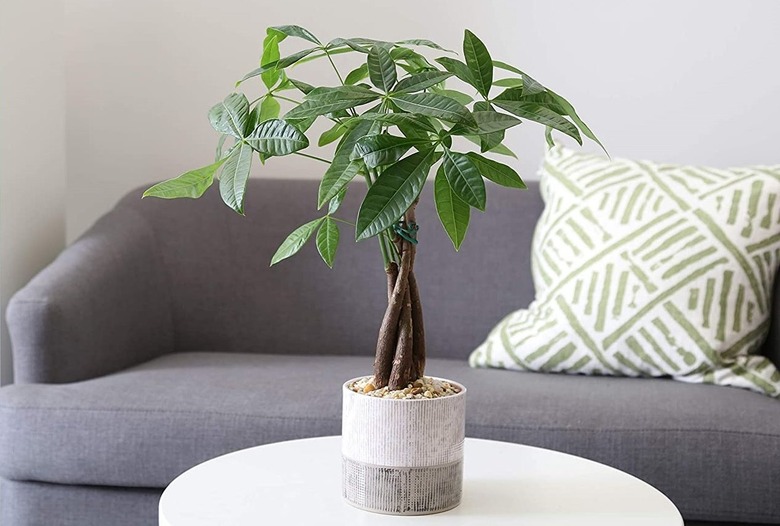The Leaves Are Turning Yellow And Brown On My Money Tree
We may receive a commission on purchases made from links.
The money tree is not guaranteed to make you wealthy, but some believe it will influence the fates in your favor. This tropical evergreen is often sold with a characteristic braided trunk, but in the wild, these plants are unrecognizable. They grow up to a towering 60 feet and dwell in the wetlands in tropical realms of Central and South America. The desktop versions are sold as easy-care plants, but you still have to meet their basic needs.
Meet the Money Tree
Meet the Money Tree
You'll find Pachira aquatica growing in swamps and watery areas in its natural realm. It thrives in the wild in freshwater wetlands and seasonally flooded forests as well as beside river banks and lake shores, always on moist ground. It produces showy red flowers and Pachira nuts. Although the plant is affectionately known as the "money tree" in the United States, where it appears as a small ornamental, this tropical evergreen is also called the Malabar chestnut.
When this species is sold as a money plant, it is almost always the version with a braided stem version, not a solitary trunk as in the wild. Rather, three or more stems are plaited together to form a trunk. The leaves, delicate and palmate, appear on slender stems and direct themselves toward the light like little solar panels. According to Asian folklore and feng shui principles, the plant brings the owner financial prosperity as well as positive energy.
Care for the Money Plant
Care for the Money Plant
Money trees kept in pots need soil conditions approximating their natural environment. This doesn't mean that they need to grow in swamps, but they must have excellent drainage. For container plants, use succulent or cactus soil or a mixture of earth or peat moss, pebbles or vermiculite, and river sand.
Despite its water-loving past, money plants should only be watered when the top of the soil has dried out. The trees need a site with indirect light, and their pots should be rotated to give all of the leaves exposure to the sunlight. Keep them at room temperature and avoid exposure to heat or cold extremes.
Understand Yellowing Leaves as Symptoms
Understand Yellowing Leaves as Symptoms
Several different conditions can cause yellowing or browning of leaves on the money tree. Basically, this is a plant's way of expressing distress, and any time its cultural care is not up to par, it will show it in its leaves. The first sign may be wilting, but if the problem continues, the leaves may yellow.
For example, if you forget to water or overwater your money tree, yellowing leaves may result. Excessive direct sun can be an issue too, and extreme amounts of hot sun can scorch the leaves. Finally, if you overdo fertilizer, it can result in leaf yellowing. In short, if your plant's leaves are turning yellow or brown, rethink every aspect of its cultural care and adjust accordingly.
